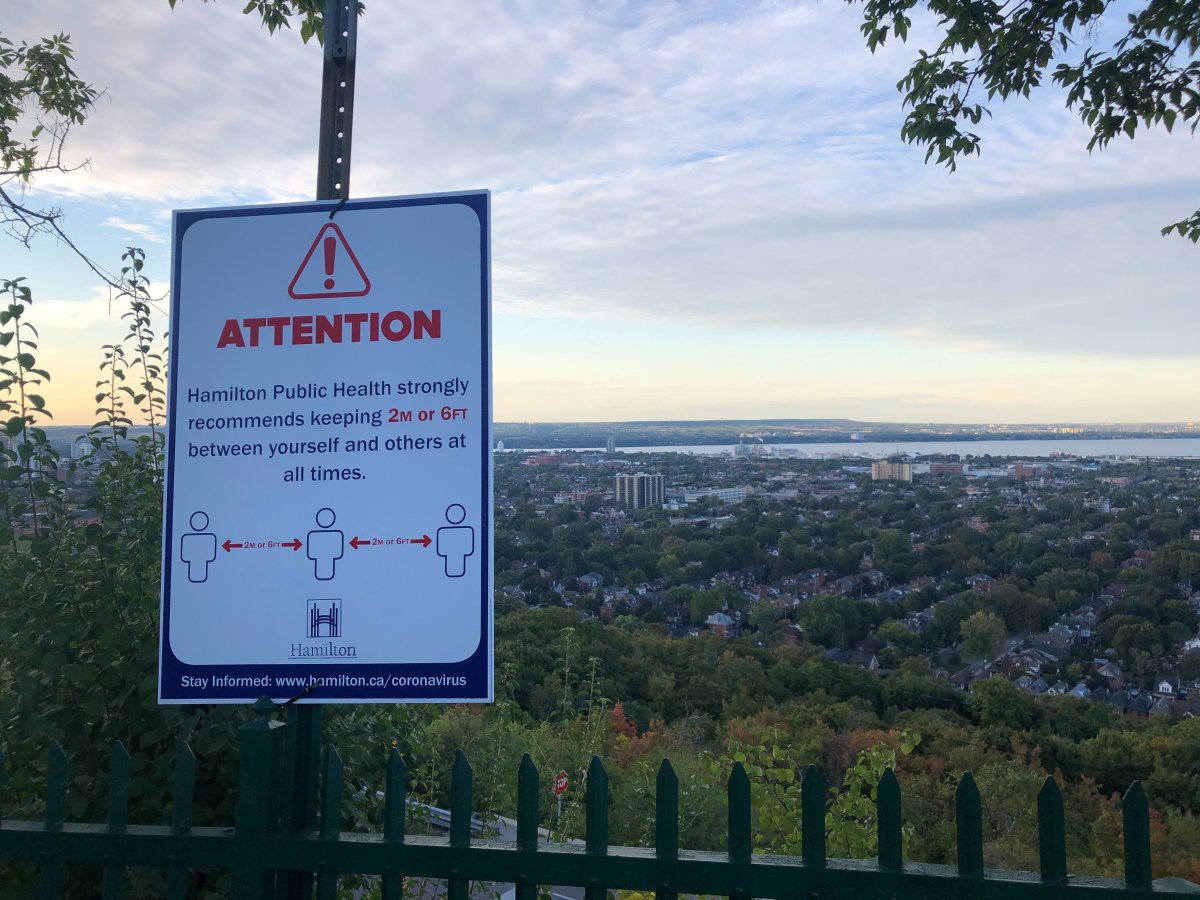The City of Hamilton is closing all sets of escarpment stairs to everything except essential travel up and down the mountain.

During Monday’s board of health meeting, the director of Hamilton’s emergency operations centre said bylaw officers will be “proactively” enforcing usage of the stairs to ensure those who are travelling on them are only doing so for essential reasons.
“We do realize that closing them entirely to those who use it as a link for transportation to get to work puts them at risk and perhaps puts them in a situation about how do they get to work, and we do not want to add any stress to those are in essential businesses in our community,” said Paul Johnson.
He noted that barricades installed on the stairs – which were “almost all destroyed” over the weekend – will be removed and replaced with signage that indicates the stairs are only to be used for essential purposes.
Bylaw officers won’t be posted at the top and bottom of the stairs, but they will be routinely checking to see if anyone is using them recreationally.
Anyone who is deemed as using them for non-essential reasons could be fined $500 under the city’s physical distancing bylaw.
Some councillors expressed concern about the city’s authority to determine who is partaking in non-essential travel.
Tom Jackson, councillor for Ward 6, said he was concerned about how bylaw officers would enforce the closure and whether the city would face “backlash” for its decision.
Ward 9 councillor Brad Clark asked Johnson whether the city will be “interrogating” residents about whether or not they’re using the stairs for essential reasons.
Johnson said bylaw officers will not be stationed at the entrances to the stairs but will be adding those sites to their enforcement rotation and “proactively” observing who’s using them, issuing fines to those who are clearing going up and down the structures for recreational purposes.
He said “thousands” of people use the stairs and cannot possibly be physically distanced when they’re in the confined spaces of those structures.
Bylaw officers will also be more proactively enforcing the city’s face covering bylaw.
Mask-wearing is mandatory on the escarpment stairs, as well as on playgrounds – which are now allowed to be open after the province reversed course on its closure of those structures over the weekend.
Johnson stressed the need to maintain physical distance at playgrounds and wear a mask if physical distancing isn’t possible.
“If you’re not within the same household, you should be keeping that two metres distance and you should be wearing a mask at all times,” said Johnson during the city’s COVID-19 media briefing on Monday. “And you can be charged and fined for that behaviour if you’re not doing it.“
While the risk of transmission outdoors is lessened, Hamilton’s medical officer of health said the risk isn’t zero – especially with the more contagious variants.
“With the fact that it is more transmissible, the things that we did that we managed to to get away with during the first wave or two that didn’t cause transmission, those are unfortunately becoming more likely to cause transmission now,” said Dr. Elizabeth Richardson.
She said the goal is to encourage residents to stay home as much as possible and opt for physical activity close to home that might be on the more “boring” side, like walking through green spaces or going for bike rides.
“What we’re trying to do is bring down mobility, so we reduce those incidental contacts that don’t need to happen.”




Comments